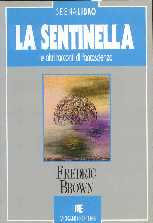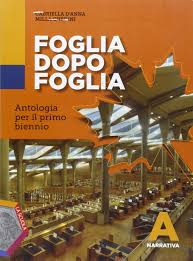
This project promotes open access materials and has been funded with support from the European Commission - Erasmus+ program. These materials reflect the views only of the author, and the Commission cannot be held responsible for any use which may be made of the information contained therein.
[Project Number: 2016-1-HR01-KA201-022159]
![]()
Title of Activity no. 1
Role play: impossible interviews
Description of educational activity
Duration: 3 hours
Pupils’ age: 14-16
Organization of the class of pupils: group work
Pupils' tasks: Students read the two short stories by F. Brown. They form two groups, each one working separately on one short story. Inside each group, two sub-groups of 4/5 students single out information to use for the interviews (questions and answers). Finally, the two groups share their work and write down the two interviews. The presentation of the product will take place through role play: one student will interpret himself, while another one plays the character. The rest of the class pay attention and jot down what each group refers in order to comment and make observation afterwards.
Support materials:
- “Pattern” and “Sentry” by Fredric Brown
- Biography of the author
- The science fiction genre
Evaluation and assessment method: The imitation game is another strategy suggested for effective learning. It is based on cooperative learning. The teacher defines exact rules, behaviours, tasks and timing.
- Setting the group
- Assigning roles and choosing a leader
- Characteristics of the assigned tasks
- Definition of setting for the activity and working materials
- Meta-reflection on the process
Digital technologies and their supports are used: videos, films, ebooks and so on.
The role play simulates a real situation, therefore students are guided in an analytical reading of the text which highlights message and also context.
Connection to curriculum
Grade: 2nd grade
Knowledge:
- Definition of fantasy/science fiction short story
- Main elements of the fantasy/science fiction short story
- Origin of the fantasy/science fiction short story
- Some important authors of these genres and their texts.
Skills:
- Understanding the story
- Identifying the structure of a fantasy/science fiction short story
- Distinguishing real and fantastic elements
- Detecting in the texts elements which relate nature to science and technology;
- Recognizing the characters’ roles and the elements of the setting in a fantasy/science fiction short story;
- Recognizing the suspense technique;
- Detecting and identifying the narrator;
- Establishing the rhythm of narration;
- Identifying space and time elements,
- Enriching vocabulary.
Competences:
- Reading
- Understanding and interpreting written texts of various kinds, and in details, using the narrating instruments to produce other texts using creative writing.
Bibliographic reference to be used during the activity
Italian version
La sentinella e altri racconti di Fredric Brown
Arnoldo Mondadori
194 pagine
Editore: Einaudi Scuola (5 febbraio 2004)
Collana: Nuove letture
Lingua: Italiano - ISBN-10: 8828607440
ISBN-13: 978-8828607441

Digital sources
There are many different sites on the Internet which illustrate the pattern of the “impossible interview”. Also the pdf version of the short stories are useful.
- https://www.youtube.com/watch?v=GN8T99KYFKk
- http://www.teche.rai.it/programmi/le-interviste-impossibili/
- https://it.wikipedia.org/wiki/Le_interviste_impossibili
- http://www.media.rai.it/articoli/le-interviste-impossibili-ovvero-quando-italo-calvino-parlava-con-montezuma-che-era-carmelo-bene/30671/default.aspx
- http://www.coris.uniroma1.it/sites/default/files/sentinella.pdf
- http://www.fantascienza.com
Results
The science fiction genre is highly appreciated by young people who know it also thanks to the cinema. The literary text differs from the film as it does not involve the use of special effects, therefore it offers the opportunity for a deeper reflection on the themes and the possibility to analyse the characters accurately especially if we want to introduce creative writing.
Recommendations
The role play of the “impossible interview” arouses students’ interest and encourages accurate and intensive reading. It enriches vocabulary and fosters oral and written linguistic skills.
Title of Activity no. 2
The science fiction genre: literature and cinema
Description of educational activity
Duration: 5 hours
Pupils’ age: 14-16
Organization of the class of pupils: group work
Pupils' tasks: Pre-requisite for the students is having read some science fiction short stories. Students are asked to read aloud in turns, then a debate is started on characteristics and trends of the science fiction genre. Students are invited to collect data on filmography, from “Le voyage dans la lune” by G. Mèliés (1902) to the latest films. Each student’s task is to trace the original poster of the film on the Internet and download it on a memory stick. All posters files with a brief presentation of the film will make up a chronological route of the genre for a power point presentation.
Support materials:The teacher proposes again F. Brown’s short stories “Pattern” and “Sentry”, plus new stories, such as “The Pedestrian” “ by Ray Bradbury from “le meraviglie del possibile”; “Key Word” and the stories from “I Robot” by I. Asimov.
Evaluation and assessment method: The evaluation method is based on the observation of the cooperative behaviour of students who work together on a project, each of them giving their contribution. Each student will feel personally involved in the learning process, as he will be the one to choose the film and write its presentation.
Connection to curriculum
Grade: 2nd grade
Knowledge:
- The science fiction genre and narrative structures and techniques of the genre
- Authors and stories of the science fiction genre: I. Asimov, F. Brown, R. Bradbury
- Science fiction cinema.
Skills:
- Grasping the specific traits of a literary text
- Mastering the linguistic structures in the texts
- Understanding the message inside
- Understanding and producing audio-visual products.
Competences:
- Reading, understanding and interpreting written texts of different kinds, and in particular, using the narrative instruments to interpret a film
- Making comparisons between literary texts and films
Bibliographic reference to be used during the activity
The science fiction “Key Item” by I.Asimov can be found in the Italian anthologies of “Biennio”, as for example in the text by Gabriella D’Anna, Milla ghedini, “Foglia dopo foglia” vol. A, La Scuola Editore (pag. 273-275)
ISBN 978-88-3504178-8
n. pagine 736
2015

Digital sources
There are many sites on the Internet dedicated to Asimov, science fiction and films of that genre. Here are those consulted and given to students:
- http://www.laterza.it/indici/9788842112020_capitolo.pdf
- https://oggiscienza.it/2014/10/22/il-cinema-di-fantascienza/
- http://www.mymovies.it/film/fantascienza/
- http://www.film.it/film/generi/genere/film-fantascienza/
Results
Students have learned to appreciate the science fiction genre; they got so passionate about reading this genre that they are going to read the short stories collections of the three authors (Asimov, Bradbury, Brown). Students already knew the film genre, but thanks to the project, they have expanded their knowledge, sharpened their skills of analytical observation and made textual competences better in the comparison between the two languages: Cinema and Literature
Recommendations
Motivating students means indulging their tastes and encouraging their personal choices; the science fiction genre is one of the favourite among the young generations of readers. On the other hand, the film language offers many different catchy stimuli especially thanks to the use of special effects in science fiction. Encouraging reading narrative texts through the relationship between cinema and literature has given tangible results: finding out that behind a film there is reference literature has triggered curiosity towards reading.
Contact
X gimnazija ''Ivan Supek''
Ul. Vjekoslava Klaića 7
10000
Zagreb
E-mail: partners@handbook4rspreaders.org










